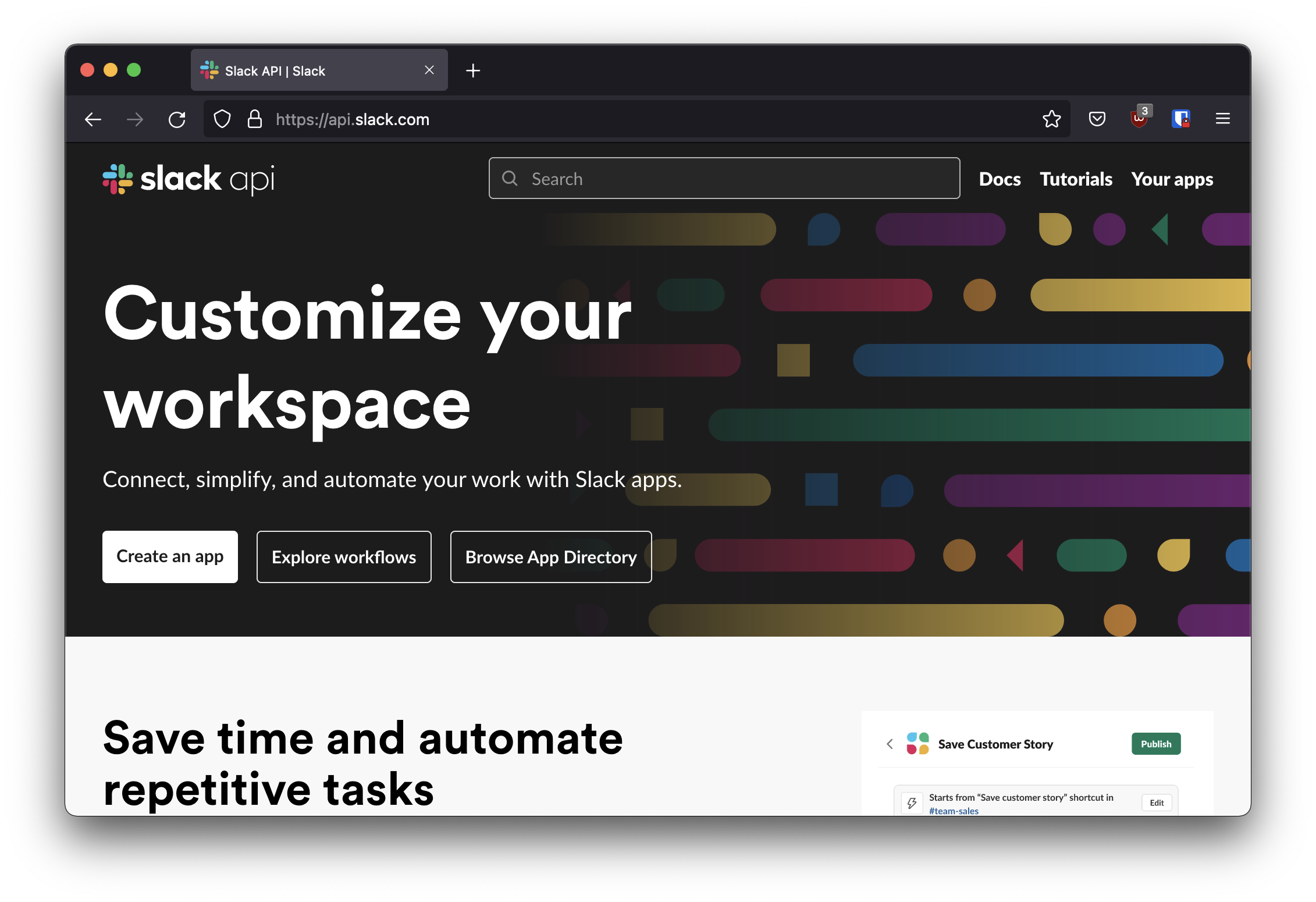Login with Slack
To enable Slack Auth for your project, you need to set up a Slack OAuth application and add the application credentials to your Supabase Dashboard.
Overview
We will be replacing the existing Slack provider with a new Slack (OIDC) provider. Developers with Slack OAuth Applications created prior to 24th June 2024 should create a new application and migrate their credentials from the Slack provider to the Slack (OIDC) provider. Existing OAuth Applications built with the old Slack provider will continue to work up till 10th October. You can refer to the list of supported scopes for the new Slack (OIDC) User.
Setting up Slack logins for your application consists of 3 parts:
- Create and configure a Slack Project and App on the Slack Developer Dashboard.
- Add your Slack
API KeyandAPI Secret Keyto your Supabase Project. - Add the login code to your Supabase JS Client App.
Access your Slack Developer account
- Go to api.slack.com.
- Click on
Your Appsat the top right to log in.

Find your callback URL
The next step requires a callback URL, which looks like this: https://<project-ref>.supabase.co/auth/v1/callback
- Go to your Supabase Project Dashboard
- Click on the
Authenticationicon in the left sidebar - Click on
Sign In / Providersunder the Configuration section - Click on Slack from the accordion list to expand and you'll find your Callback URL, you can click
Copyto copy it to the clipboard
For testing OAuth locally with the Supabase CLI see the local development docs.
Create a Slack OAuth app
- Go to api.slack.com.
- Click on
Create New App
Under Create an app...:
- Click
From scratch - Type the name of your app
- Select your
Slack Workspace - Click
Create App
Under App Credentials:
- Copy and save your newly-generated
Client ID - Copy and save your newly-generated
Client Secret
Under the sidebar, select OAuth & Permissions and look for Redirect URLs:
- Click
Add New Redirect URL - Paste your
Callback URLthen clickAdd - Click
Save URLs
Under Scopes:
- Add the following scopes under the
User Token Scopes:profile,email,openid. These scopes are the default scopes that Supabase Auth uses to request for user information. Do not add other scopes as Sign In With Slack only supportsprofile,email,openid.
Enter your Slack credentials into your Supabase project
- Go to your Supabase Project Dashboard
- In the left sidebar, click the
Authenticationicon (near the top) - Click on
Providersunder the Configuration section - Click on Slack from the accordion list to expand and turn Slack Enabled to ON
- Enter your Slack Client ID and Slack Client Secret saved in the previous step
- Click
Save
You can also configure the Slack (OIDC) auth provider using the Management API:
1# Get your access token from https://supabase.com/dashboard/account/tokens2export SUPABASE_ACCESS_TOKEN="your-access-token"3export PROJECT_REF="your-project-ref"45# Configure Slack (OIDC) auth provider6curl -X PATCH "https://api.supabase.com/v1/projects/$PROJECT_REF/config/auth" \7 -H "Authorization: Bearer $SUPABASE_ACCESS_TOKEN" \8 -H "Content-Type: application/json" \9 -d '{10 "external_slack_oidc_enabled": true,11 "external_slack_oidc_client_id": "your-slack-client-id",12 "external_slack_oidc_secret": "your-slack-client-secret"13 }'Add login code to your client app
Make sure you're using the right supabase client in the following code.
If you're not using Server-Side Rendering or cookie-based Auth, you can directly use the createClient from @supabase/supabase-js. If you're using Server-Side Rendering, see the Server-Side Auth guide for instructions on creating your Supabase client.
When your user signs in, call signInWithOAuth() with slack_oidc as the provider:
1async function () {2 const { , } = await ..({3 : 'slack_oidc',4 })5}For a PKCE flow, for example in Server-Side Auth, you need an extra step to handle the code exchange. When calling signInWithOAuth, provide a redirectTo URL which points to a callback route. This redirect URL should be added to your redirect allow list.
In the browser, signInWithOAuth automatically redirects to the OAuth provider's authentication endpoint, which then redirects to your endpoint.
1await ..({2 ,3 : {4 : `http://example.com/auth/callback`,5 },6})At the callback endpoint, handle the code exchange to save the user session.
Create a new file at app/auth/callback/route.ts and populate with the following:
app/auth/callback/route.ts
1import { NextResponse } from 'next/server'2// The client you created from the Server-Side Auth instructions3import { createClient } from '@/utils/supabase/server'45export async function GET(request: Request) {6 const { searchParams, origin } = new URL(request.url)7 const code = searchParams.get('code')8 // if "next" is in param, use it as the redirect URL9 let next = searchParams.get('next') ?? '/'10 if (!next.startsWith('/')) {11 // if "next" is not a relative URL, use the default12 next = '/'13 }1415 if (code) {16 const supabase = await createClient()17 const { error } = await supabase.auth.exchangeCodeForSession(code)18 if (!error) {19 const forwardedHost = request.headers.get('x-forwarded-host') // original origin before load balancer20 const isLocalEnv = process.env.NODE_ENV === 'development'21 if (isLocalEnv) {22 // we can be sure that there is no load balancer in between, so no need to watch for X-Forwarded-Host23 return NextResponse.redirect(`${origin}${next}`)24 } else if (forwardedHost) {25 return NextResponse.redirect(`https://${forwardedHost}${next}`)26 } else {27 return NextResponse.redirect(`${origin}${next}`)28 }29 }30 }3132 // return the user to an error page with instructions33 return NextResponse.redirect(`${origin}/auth/auth-code-error`)34}When your user signs out, call signOut() to remove them from the browser session and any objects from localStorage:
1async function () {2 const { } = await ..()3}